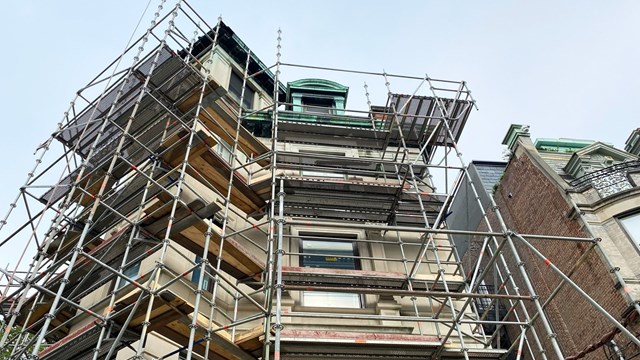Imagine living in a building where your neighbors do whatever renovation work they want with no restrictions. Some believe they are do-it-yourself electricians and they move wiring within the apartment. Others put kitchens in the basement. Some decide to open the living room by knocking down a partition. Others want more modern picture windows. While they all may be well-intended, this scenario can lead to chaos and dangerous conditions in the building. The home wiring by an unlicensed electrician can lead to a fire. The wall that was taken down may be a load-bearing one. The picture window may make the whole building look "strange." Building alteration agreements are a vehicle for the building to have uniform rules and regulations to prevent unnecessary problems.
Simply stated, building alteration agreements are written contracts between the building and a shareholder stating the terms by which a shareholder may undertake an alteration in his apartment. They are an amplification of the provision in most proprietary leases requiring the board of directors' prior written approval for alterations. The contract may vary from building to building, but the basic topics covered are usually the same.
Why the Building Cares
The building is concerned about individual renovations for a number of reasons. The first is safety. The building wants to make sure that if the walls are moved or plumbing changed, it will be done in accordance with any applicable building codes. Boards must be sure that the work will be structurally sound and will not create any fire or safety hazards. Even if renovation work is sound or looks good, it may be in violation of the building code. It may have been done without any filing with the building department and is illegal.
A second consideration is making sure zoning laws are not violated which may adversely affect the entire building. An increase or decrease in the room count for the building which has not been authorized could result in the loss of the building's Certificate of Occupancy (C of O).
Boards must also watch out for a shareholder who increases the size of his apartment without buying more shares and paying more maintenance. This is true of shareholders with penthouse apartments who enlarge the rooms and gradually start to take over the roof.
In addition, there are a host of legal problems which can arise if the building does not make sure that the shareholder goes about the renovation in the proper way. There may be mechanic's liens placed on the building. There can be damage to neighboring apartments or the building as a result of the renovation.
All of these factors make building alteration agreements a must. These agreements are common in co-ops, they are less common in condos. (One reason many people purchase units in condos is this very lack of restrictions.) However, more condos than ever are making an effort to regulate the activities of unit owners more like co-ops. After all, the same potential safety problems exist.
There are some printed forms of these agreements on the market which are a good starting place. Some managing agents have forms they work with. However, most buildings hire an attorney to draft one.
As an attorney, I see many of these agreements. Some are very comprehensive, others are totally inadequate. Of course, some buildings still do not even have one.
Even if your building uses a form, it is very important for board members to discuss the agreement with an attorney knowledgeable in this area, to be certain that all of your building's concerns have been addressed. Once you have an agreement, time and experience will tell you which aspects need to be improved and whether anything should be added by your attorney.
The legal problems created from such actions can be enormous and can lead to litigation. The arguments usually arise over who should pay for having the situation corrected. Sometimes the argument is over whether it should be corrected at all, such as when a board asks a shareholder to put the apartment back to its original condition. Therefore, as the renovation progresses, any budding problems should be immediately discussed with an attorney.
Reviewing and Approving Plans
The first step in the renovation approval process is requiring the shareholder to submit proposed plans for the board's review. This procedure is meaningless if there isn't a competent and qualified person (either someone on the board or a consultant) to review them.
Many buildings have an architect or engineer on retainer to review them. Usually the cost is passed on to the shareholder. Some buildings just require the shareholder's architect to come to a board meeting to explain what is being done. Many shareholders complain that boards take too long to approve proposed renovations. Having an architect on retainer can help save time in reviewing the proposal and can assure the board that the renovation will not create any safety hazards.
The board's role is to make sure that the renovation will be done safely and legally. The board should generally not be concerned with aesthetics, unless the renovation involves the exterior of the building or a common area.
The building will want to examine whether the renovation may damage or change any building systems, such as plumbing or air conditioning. Changing windows can be a controversial subject if the shareholder is proposing to put them in a wall where no one else has previously put windows. The shareholder should not be gaining more space from the renovation at the expense of the other shareholders.
Many shareholders, intentionally or unintentionally, fail to get necessary approvals for renovations or file necessary plans with governmental agencies such as the Building Department or the Landmark's Commission. The agreement underscores the necessity for doing this and puts the burden, expense and legal obligation on the shareholder.
Each building has a C of O. Whenever the number of rooms increases or decreases, the certificate must be amended. Anonymous calls to governmental agencies sometimes result in inspections. At least one building has had its C of O pulled when a shareholder connected two apartments and reduced the room count. It was later restored at the shareholder's expense. This can be particularly problematic if the building is trying to refinance its mortgage. However, it should be noted that a recent change in the law has made joining apartments much easier than in the past. The C of O for the entire building does not need to be changed. It is more a matter of having the architect for the project file plans and fill out papers.
Asbestos issues must also be addressed in alteration agreements. If any asbestos will be "disturbed," it has to be abated or encapsulated. Even if it will not be disturbed, papers stating that must be filed with governmental agencies.
Obtain Coverage
This is a very important area and one which is often taken for granted. Many renovations result in at least some damage to neighboring apartments. The damage can be as simple as construction dust which requires curtains to be cleaned or as complicated as cracked walls or broken pipes. The shareholder must obtain personal liability and property damage insurance in adequate amounts relative to the work being done. The insurance should name the shareholder, the building and the managing agent as additional insurers.
Contractors should have workers compensation and employee liability insurance. Many buildings also require that contractors purchase payment and performance bonds, at the shareholder's expense, to make sure that there is insurance coverage in case subcontractors or suppliers are not paid or the contractor does not finish the job.
Some buildings require architects and engineers working in the building to carry professional liability insurance. There is no legal requirement that these professionals have such insurance, so you must ask.
It is not enough to just require these types of insurance from a shareholder in the building alteration agreement. The board must ask for copies of the policies or other evidence of insurance before the work begins.
In addition, the building must be protected by the shareholder against any lawsuits which may arise from the renovation. If the building is sued as a result of damage to individuals or property, the shareholder should be required to pay for any of the building's legal expenses and any settlement or judgement. The building alteration agreement should contain such a provision. Any workman injured on a project can sue the shareholder and possibly the building depending on the cause of the injury.
Keep in mind that contractors, subcontractors, materialmen, suppliers and architects who renovate individual apartments can file mechanic's liens against the property on which the building is located for the amount of any outstanding fees. In a co-op, the lien is against the entire building, not just the apartment in which the work was done. These liens must be removed if there is any transfer of ownership, such as a closing, or the building's mortgage is being refinanced.
If refinancing is held up or prevented by a mechanic's lien, this can create money damages for the building against the shareholder. Closings can still occur if there is a lien, the co-op just gives an "indemnification letter" promising to take care of the issue.
Mechanic's liens can be bonded through an insurance company and the money put in escrow with the court pending resolution of a dispute. All costs associated with this should be borne by the shareholder.
As with most of the topics discussed in this article, any legal or other expenses incurred by the building in connection with the problem should be reimbursed by the shareholder.
Monitoring the Work
The building does not want to "supervise" the construction, but they should want to periodically check what is being done to ascertain that what is being built is what is on the approved drawings and specifications.
Renovations are an everyday occurance in co-ops and condos. You must all live together in the building and it is in everyone's best interest to see that renovations are carried out properly and safely. Taking the time to have a good building alteration agreement drafted by an attorney knowledgeable in this area and get the proper legal advice when problems arise will save the building and the shareholders a lot of money and headaches in the long run.
Ms. Berger of the Law Offices of C. Jaye Berger is a real estate and construction attorney in New York City who represents many co-ops, shareholders, contractors and architects, designers and buyers and sellers of apartments.







2 Comments
Leave a Comment